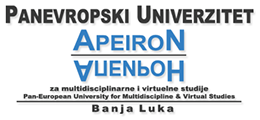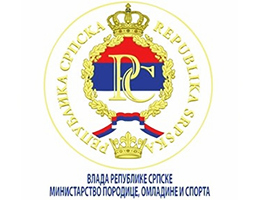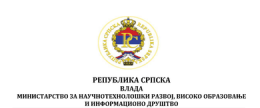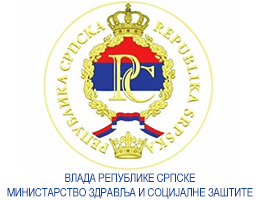HRV MONITORING AND RECOVERY RATES: AN EXPERIMENTAL STUDY ON YOUNG TENNIS ATHELTES
Volume 15, Issue V (2025)
Volume 15, Issue V (2025)
HRV MONITORING AND RECOVERY RATES: AN EXPERIMENTAL STUDY ON YOUNG TENNIS ATHELTES
Abstract:
Heart rate variability (HRV) represents time variation between consecutive heartbeats and reflects the ability of the autonomic nervous system to adapt to different stimuli. Despite the growing focus on HRV as indicator of recovery in athletes, there is a lack in scientific literature on how HRV and recovery indices manifest and vary in young tennis athletes, limiting the understanding of physiological dynamics and strategies for optimizing recovery for these athletes. The aim is to identify specific patterns of physiological adaptation during the post-training and competition recovery process. The study aims to understand how HRV characteristics may reflect fatigue, recovery and response to physical stress, with the goal of developing strategies for recovery and performance optimization for this specific population. The study involved 120 young tennis athletes aged 16-18 years old, with 3 years of experience in the sport. The results showed a weak positive correlation with training performance (0.027) and a weak negative correlation with match performance (-0.010). The RMSSD shows weak positive correlations with both training performance (0.013) and match performance (0.031). The LF/HF ratio has a negative correlation with the training performance (-0.206) and there is a weak positive correlation with the match per- formance (0.110). The results underline the need for a holistic and multifactorial approach to optimize the performance of young tennis athletes. Regular monitoring of HRV provides valuable information on the balance of the autonomic nervous system and the athlete’s recovery status but should be complemented by other assessments such as psychological assess- ments and skill-based tests.
Keywords:
Heart rate variability, Tennis, young athletes, RMSSD
Full Text:
References:
Aliberti, S. (2023). Perceptions on Nordic Walking in women post COVID-19 pandemic: motivations and future intentions. Journal of Physical Education & Sport, 23(1).
Aliberti S., D’Elia F., Giardullo G. and Raiola G. (2025). Agonism and performance in adolescent football players in informal physical educa- tion settings. Front. Sports Act. Living 7:1511719. doi:10.3389/fspor.2025.1511719
Buchheit, M. (2014). Monitoring training status with HR measures: do all roads lead to Rome?. Frontiers in Physiology, 5, 73.
D’Elia, F., Esposito, G., D’Isanto, T., Altavilla, G., & Raiola, G. (2021). The impact of the racket on mobility performance in wheelchair tennis.
Sports Science and Health, 21(1), 11-15.
D’Isanto, T. (2019a). State of art and didactics opportunities of physical education teaching in primary school. Journal of Physical Education and Sport, 19, 1759-1762.
D’Isanto, T. (2019b). Physical and sport education between Italian academic system and European Research Council structure panel. Journal of Human Sport and Exercise, 14(1proc), S66-S76.
Esposito, G. (2024). Evaluation of the fundamental technical aspects of the game in Six Nations Rugby. Journal of Physical Education & Sport, 24(1).
Esposito, G., Ceruso, R., D’Elia, F., & D’Isanto, T. (2020). Performance anxiety: How to play reliable and rational tennis by reducing mental pressure. Journal of Human Sport and Exercise, 15(2), 213-221.
Esposito, G., Altavilla, G., Giardullo, G., Ceruso, R., D’isanto, T. (2024). The Effects of the Use of Plyometric Exercises with and without the Ball in the Development of Explosive Strength in Volleyball Journal of Functional Morphology and Kinesiology, 9 (3), art. no. 126
García-Gonzálvez, S., López-Plaza, D., & Abellán-Aynés, O. (2022). Influence of Competition on Anxiety and Heart Rate Variability in Young Tennis Players. Healthcare, 10(11), 2237-2237.
Michel, M. F., Girard, O., Guillard, V., & Brechbuhl, C. (2023). Well-being as a performance pillar: a holistic approach for monitoring tennis players. Frontiers in Sports and Active Living, 5, 1259821.
Ni, Z., Sun, F., & Li, Y. (2022). Heart rate variability-based subjective physical fatigue assessment. Sensors, 22(9), 3199.
Plews, D. J., Laursen, P. B., Stanley, J., Kilding, A. E., & Buchheit, M. (2013). Training adaptation and heart rate variability in elite endurance athletes: opening the door to effective monitoring. Sports Medicine, 43, 773-781.
Raiola G. (2020a). Proposal of rearrangement of physical training and sport sciences methodology academic disciplines in Italian university body. Sport Science, 14 (1), pp. 43 - 47
Raiola G. (2020b). The Movement and Sport Science in Italy towards the European Research Council. Physical Culture and Sport, Studies and Research, 86 (1), pp. 37 – 48.
Raiola G. (2019a). Comparison of exercise and sport sciences epistemology between European research council structure panel and Italian academic system. Sport Science, 12, pp. 112 - 120
Raiola G. (2019b). Survey on exercise and sport sciences in Italy. Journal of Human Sport and Exercise, 14 (Proc4), S1163 - S1168. DOI: 10.14198/jhse.2019.14.Proc4.81
Raiola, G. (2025). Physical Literacy, According to the World Health Organization (WHO), in Italian Preschool and Education for a Daily Movement Routine. Children2025,12, 66. doi.10.3390/children.120100662024
Salierno, M., Esposito, G., Izzo, R., Fattore, S., & D’Isanto, T. (2021). Propulsive strength training in wheelchair tennis to improve service response. Journal of Human Sport and Exercise, 16(2proc), S726-S734.
Sandercock, G. R., Bromley, P. D., & Brodie, D. A. (2005). Effects of exercise on heart rate variability: inferences from meta-analysis. Medi- cine and science in sports and exercise, 37(3), 433-439.
Stanley, J., Peake, J. M., & Buchheit, M. (2013). Cardiac parasympathetic reactivation following exercise: implications for training prescrip- tion. Sports medicine, 43, 1259-1277.






